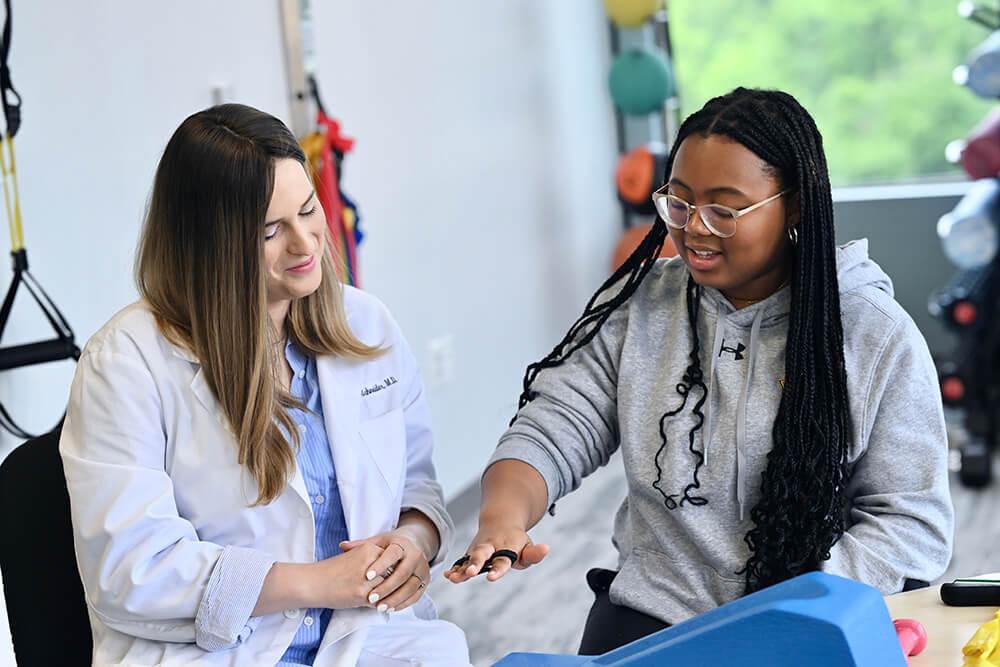Handi Work
A Touro Occupational Therapist Created a Comfy Hand Splint—and a Successful Company

Learning in the classroom is important, but putting that knowledge to practical use in the real world can be life-changing.
Case in point: Chavi Perelman, who graduated from Touro’s School of Health Sciences in occupational therapy, took what she learned as a student and created a lighter, agile and more affordable hand splint that she uses on her patients at Montgomery Orthopedics in Maryland.
“The Touro program really focused on creativity and innovation,” says Perelman, 33, who graduated in 2014 and more recently co-founded the company, Hook Splint. That’s in addition to her clinical work as an occupational therapist, who is a certified hand therapist. “In every class, it was ingrained that no goal was out of reach for our patients. It’s not ‘Can I?’ but ‘How can I?’”
In Perelman’s case, the hand splint idea sprung directly from the creativity and imagination of a child. Her child. Three years ago, her daughter Chaya, then 6, made her mother a braided pipe cleaner bracelet. Perelman began playing with the pink, purple and blue gift and experienced a light bulb moment. She took her hand splint idea—okay, her and Chaya’s idea—to Dr. Harrison Solomon, a top hand surgeon in Maryland. He was not fond of what was then on the market. He heard complaint after complaint from his patients on hand splints made of heavy and irritating, thermoplastic material that required the laborious process of having to be heated and molded. Worse, they felt bulky and unwieldy on the fingers.
ENTER HOOK SPLINT
“It was during the pandemic and the clinic was so slow that we had time to think about it and work on it and perfect it,” Perelman says. They consulted with engineers and came up with a new silicone coated band that feels like an Apple Watch band or silicone ring. “We started off with one size and now we have three sizes and thicknesses and are working on a fourth. We’ve also launched a hand and arm roller. Patients love our splints and wear them longer because they’re so comfortable and light and they do the job they were meant to do. It makes me happy to see patients’ recovery made easier.”
Initially, Perelman and Solomon focused on re-inventing the relative motion orthosis (RMO), which is used in treating a variety of conditions, including finger stiffness and hand pain. An RMO is a splint that places one finger relatively extended or flexed compared to the adjacent fingers. By playing with the pipe cleaner bracelet, she and Solomon spent two years working on Hook Splint. What they came up with are coated bands, which are easy to make and ready to use out of the bag. No heat is required to mold them like the alternative options. Thousands of the hand splints have been sold in the U.S. and Canada and as far as Australia and New Zealand. “Our patients are wearing their splints much longer, as they don’t have to deal with skin irritation since the Hook Splint is much more hygienic than what is on the market.”
Perelman’s success has not gone to her head. Daughter Chaya, now 9, has seen to that. “She chose me when writing an essay about someone she admires,” says Perelman, laughing with maternal delight. “But she also admires herself for presenting me with a gift that gave me the idea.”

